
The inaugural SPIKE ISLAND LITERARY FESTIVAL is now on sale for the weekend of 02nd–04th September 2022! Sponsored by Cork County Council, Commodore Hotel, Bella Vista Hotel, Trigon Hotels, Fota Island Resort and Belvelly Castle. Dedicated to the popular theme of crime writing, visit an island location perfect for inspiring writers, with a dark history of four prisons over 400 years that has inspired many books. Lucky attendees can further their knowledge and writing skills with a series of author talks and workshops, suited to all genres and storytellers.
Every visitor will also enjoy very special access to all areas, with a ‘writers tour’ on arrival, which will focus on the criminals and crimes associated with this historic island. Join us for an unbelievable deep dive into writing and the art of storytelling, at Ireland’s historic island.
You can choose from several great event formats:
Author speaking events – Where authors share their experience and advice in a relaxed setting, inspiring budding authors to achieve their goals. Includes a special tour on arrival.
Crime writing workshop – Join seasoned published author Kevin Doyle for a deep dive into writing in this exciting genre. Small class size and includes a tour on arrival. Expect practical, applicable tips.
Screenwriting workshop – Writing for the screen has its own challenges, but incredible rewards! Learn the secrets at this insightful afternoon in small group size with Philip Davison, and see your name on the small or big screen one day!
Meet the publisher – Submit your synopsis and opening chapter in advance and receive advice from the people who really matter – the professionals who will decide if your book is published. Get time with highly experienced industry experts from the esteemed, Liberties Press – Small group size and tour included in this afternoon visit. Take that all-important step to being published.
Author readings – Sit in as some world-class writers perform readings in incredible locations like prison cells and artillery gun parks! Enjoy a very special ‘Behind the Scenes’ tour that focused on our writers and criminals that inspired books, and hear from the likes of Cónal Creedon, Philip Davison, Catherine Kirwan and more. Going on sale at the end of June.
02 SEPTEMBER – FRIDAY | EVENING | GRAND OPENING !!
PJ Coogan to open & interview Alex Barclay & Liz Nugent
PRICE PER TICKET: €25
BOAT IN: 5 pm – RETURN: 8.15 pm
A fantastic evening on Spike Island with renowned authors Alex Barclay and Liz Nugent interviewed by broadcaster PJ Coogan.
On arrival, visitors will be given a guided tour with a focus on a murder mystery and the darker tales of Spike Island. On arrival at the Fortress itself, there will be time to enjoy a tea/coffee before the event begins.
This will be an intimate event with limited numbers in attendance. A unique opportunity to get such an insight into the minds of two of Ireland’s foremost thriller writers.
03 SEPTEMBER – SATURDAY | Afternoon
EVENT – Meet the publisher – Liberties Press
PRICE PER TICKET: €25. Includes ferry, short tour and event.
BOAT IN: 12.30 pm – RETURN: 4.30 pm
A rare opportunity to meet face to face with one of Ireland’s most renowned publishing houses, Liberties Press. Receive feedback on your work and tips on how to make your work stand out to publishers.
On arrival, visitors will be given a guided tour with a focus on a murder mystery and the darker tales of Spike Island. On arrival at the Fortress itself, there will be time to enjoy a tea/coffee before the event begins.
Attendees will be invited to submit a synopsis & opening chapter of their work in progress to sean@libertiespress.com in advance of the festival and he will give feedback anonymously on the day. Anyone submitting should put “Spike Island Submission” in the subject line. Please do not submit work if you have not bought a ticket.
03 SEPTEMBER – SATURDAY | Afternoon
Screenwriting workshop with Philip Davison (12 people max)
PRICE PER TICKET: €25 – Includes boat, tour and 2.5 hours approx in screenwriting workshop.
BOAT IN: 12:30 pm – RETURN: 4.30 pm
A fantastic afternoon on Spike Island with renowned author Phillip Davison giving an intimate screenwriting workshop
On arrival, visitors will be given a guided tour with a focus on a murder mystery and the darker tales of Spike Island. On arrival at the Fortress itself, there will be time to enjoy a tea/coffee before the event begins.
This will be an intimate event with limited numbers in attendance. A unique opportunity to get such an insight into the mind and writing methods of one of Ireland’s foremost writers.
03 SEPTEMBER – SATURDAY | Evening
Headline – John Connolly & Mark Billingham
PRICE PER TICKET: €25
BOAT IN: 4 pm – RETURN: 7 pm
A fantastic evening on Spike Island with renowned authors John Connolly & Mark Billingham in conversation.
On arrival, visitors will be given a guided tour with a focus on a murder mystery and the darker tales of Spike Island. On arrival at the Fortress itself, there will be time to enjoy a tea/coffee before the event begins.
This will be an intimate event with limited numbers in attendance. A unique opportunity to meet two of Ireland and England’s foremost thriller writers
04 SEPTEMBER – SUNDAY | Afternoon
Crime writing workshop with Kevin Doyle
PRICE PER TICKET: €25
BOAT IN: 12.30 pm – RETURN: 4.30 pm
A fantastic afternoon on Spike Island with renowned author Kevin Doyle giving an intimate crime writing workshop.
On arrival, visitors will be given a guided tour with a focus on a murder mystery and the darker tales of Spike Island. On arrival at the Fortress itself, there will be time to enjoy a tea/coffee before the event begins.
This will be an intimate event with limited numbers in attendance. A unique opportunity to get such an insight into the mind and writing methods of one of Ireland’s foremost thriller writers.
04 SEPTEMBER – SUNDAY | Evening
Michelle Dunne & Andrea Mara
PRICE PER TICKET: €25
BOAT IN: 12:30 pm – RETURN: 4:30 pm
A fantastic evening on Spike Island with renowned authors Michelle Dunne & Andrea Mara interviewed by broadcaster PJ Coogan.
On arrival, visitors will be given a guided tour with a focus on a murder mystery and the darker tales of Spike Island. On arrival at the Fortress itself, there will be time to enjoy a tea/coffee before the event begins.
SATURDAY 03rd & SUNDAY 04th – 12.30pm
PRICE PER TICKET: €25
BOAT IN: 12.30 pm – RETURN: 4.30 pm
Join us on this very special literary visit for a ‘Behind the Scenes’ tour followed by readings from authors in unique areas. Once you step off the 12.30 pm ferry your guide will share the unbelievable tales of our murderers and notorious criminals. Many have inspired writers to put pen to paper, and we will discuss the resulting books. Then we head underground through the Spike Island tunnels, where prisoners were held in the 1800s. Normally off-limits to day tours, see a side of the island normally never seen. Then join amazing authors for readings in incredible settings, like prison cells, artillery gun parks and more. Tour and reading complete, you are free to explore the rest of our amazing island!
Saturday – 12.30 sailing
Reading 1 – Catherine Kirwan
Reading 2 – Amy Cronin
Reading 3 – Tadgh Coakley
Sunday – 12.30 sailing
Reading 1 – Philip Davison
Reading 2 – Cónal Creedon
About the Authors

Alex Barclay
Alex’s first two crime novels feature NYPD homicide detective, Joe Lucchesi, and the six novels that followed feature bipolar FBI agent, Ren Bryce. She also writes for screen and is currently developing an original crime series for television. Alex was born in Dublin, and lives on the Beara peninsula in Cork, where she’s set two of her most recent books – the psychological thriller, I Confess, and her debut novel for teens, My Heart and Other Breakables, published in 2022 by Harper Collins. Also In 2022, her YA crime debut, Rock Paper Killers, was published by Simon & Schuster under the pseudonym Alexia Mason
Find out more at harpercollins.co.uk/blogs/authors/alex-barclay

Mark Billingham
Mark is an Actor, television writer, comedian and international bestselling author of the Tom Thorne series. With nineteen books in the series, the first two became a six-part TV series, Thorne which originally aired on Sky One.
Find out more at uk.markbillingham.com

Tadhg Coakley
is from Mallow and lives in Cork city. His debut novel The First Sunday in September (2018) was shortlisted for the Mercier Press Fiction Prize. Whatever It Takes was chosen as the 2020 Cork, One City One Book. Everything (a sports autobiography, which he co-wrote with its subject, Denis Coughlan) was picked as one of the 2020 sports books of the year in The Sunday Times, The Irish Examiner and The Irish Times. The Game: A Journey into the Heart of Sport (2022) was described by Donal Ryan as a ‘towering work’. Tadhg’s short stories, articles and essays have been widely published.
Find out more at www.tadhgcoakley.ie
 John Connolly
John Connolly
International bestselling author of 30+ books, including the Charlie Parker novels, The Book Of Lost Things, the Samuel Johnson Adventures and more.
Find out more at www.johnconnollybooks.com
 Cónal Creedon
Cónal Creedon
is an award-winning novelist, playwright and documentary filmmaker.
Find out more at www.conalcreedon.com

Amy Cronin
is a writer from Cork, Ireland. She is a fan of thrillers and crime novels, and her love of suspense and plot twists flows into her writing. Blinding Lies is Amy’s debut novel and is the first part of a trilogy. It is available online and in paperback in all good bookshops. It was a #1 bestseller in the Amazon Northern Irish Crime category, and #7 in the online Irish Crime category, as well as a WHSmith bestseller. The follow-up, Twisted Truth, is available now online and the paperback will be available in bookshops soon.
Find out more at www.amycroninauthor.com
 Philip Davison
Philip Davison
has been described by Bob Geldof as “Ireland’s best-kept secret”; his work has been compared by the Irish Independent with that of John le Carré and Graham Greene. His most recent novels are Quiet City and Eureka Dunes, both published by Liberties Press. A TV adaptation of his novel The Crooked Man, starring Ross Kemp, was broadcast on ITV. He has written twelve plays for radio and has co-written two television dramas, Exposure and Criminal Conversation, and Learning Gravity, a documentary film on poet and undertaker Thomas Lynch. His play The Invisible Mending Company was performed on the Abbey Theatre’s Peacock stage.
Find out more at www.philipdavison.com
 Kevin Doyle
Kevin Doyle
is the author of two novels, To Keep A Bird Singing and A River Of Bodies. He co-wrote (with Spark Deeley) the illustrated children’s book, The Worms that Saved the World. A widely experienced creative writing teacher he is currently chairperson of the Irish Writers Union.
Find out more at www.kevindoyle.ie
 Michelle Dunne
Michelle Dunne
is a writer from Cobh who has used some of her own experiences in the Irish Army and as a UN Peacekeeper to write her debut thriller, the first in the Lindsey Ryan series, While Nobody Is Watching which is currently in development for television. Her follow-up book, The Invisible was published in April 2022.
Find out more at www.michelledunnebooks.com
 Catherine Kirwan
Catherine Kirwan
grew up on a farm in the parish of Fews, County Waterford. She studied law at UCC and lives in Cork where she works as a solicitor. Her first novel, Darkest Truth, was chosen as Cork’s One City One Book by Cork City Libraries in 2019. Her current book, Cruel Deeds, is out now from Hachette Ireland.
Find out more at Penguin Books
 Andrea Mara
Andrea Mara
is a Sunday Times and Irish Times Top Ten bestselling author, who has been shortlisted for several awards, including Irish Crime Novel of the Year at the An Post Book Awards. Her most recent novel, All Her Fault, was Sunday Times Crime Book of the Month, a top ten bestseller in the UK and Ireland, and a Kindle Top 5 bestseller. She lives in Dublin, Ireland, with her husband and three children, and also runs a multi-award-winning parent and lifestyle blog, OfficeMum.ie. Her new crime novel, Hide And Seek, will be published in August 2022.
Find out more at officemum.ie
 Liz Nugent
Liz Nugent
is a writer of award-winning psychological suspense novels Unravelling Oliver (2014), Lying in Wait (2016), Skin Deep (2018) and Our Little Cruelties (2020). All four books topped the Irish bestsellers list and Liz has won multiple literary awards. Her books have also been optioned for screen adaptations. Liz’s books have been translated into 16 languages and she has also written extensively for radio and television in drama and animation. In October 2017, Liz won the Irish Woman of the Year Award for Literature and in February 2021, she was awarded the James Joyce medal by the Literary Historical Society of UCD.
Find out more at www.liznugent.ie
Sponsors:

 Maria O’ Sullivan was born in Cobh, Co Cork Ireland in 1990. She graduated with an Honours degree in Fine Art from Crawford College of Art and Design in June 2014.
Maria O’ Sullivan was born in Cobh, Co Cork Ireland in 1990. She graduated with an Honours degree in Fine Art from Crawford College of Art and Design in June 2014.
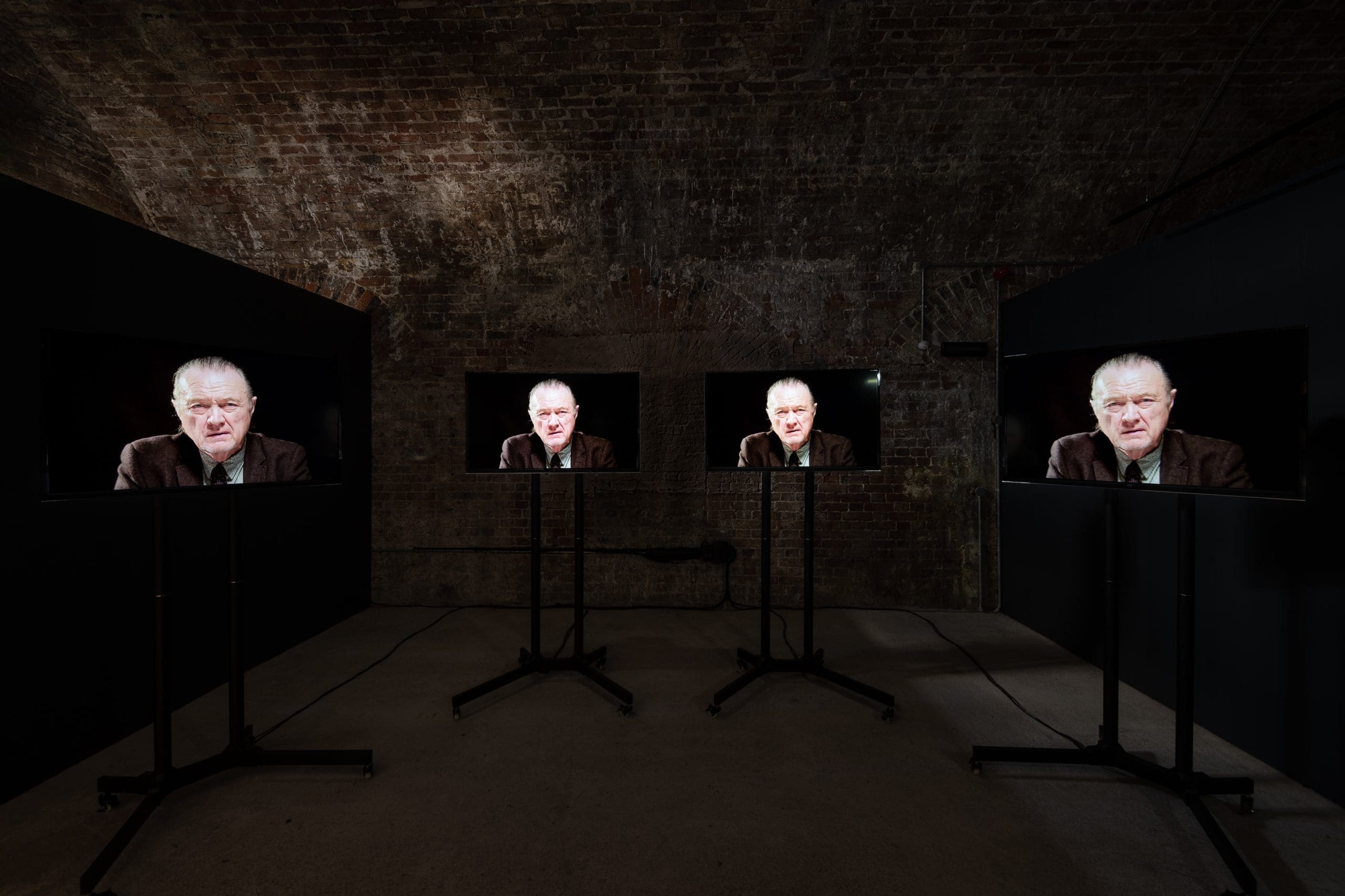 The making of The Trial involved the design of a creative process that enabled the men from the Bridge Project to engage with UCD academic research on healthcare in prison, past and present. The script for The Trial was developed through a series of creative workshops using carefully selected historic research and the men’s own health in prison experience. Two case studies from the 1880s, John Burns and John Burke resonated strongly with the men and were developed into mini scripts.
The making of The Trial involved the design of a creative process that enabled the men from the Bridge Project to engage with UCD academic research on healthcare in prison, past and present. The script for The Trial was developed through a series of creative workshops using carefully selected historic research and the men’s own health in prison experience. Two case studies from the 1880s, John Burns and John Burke resonated strongly with the men and were developed into mini scripts.


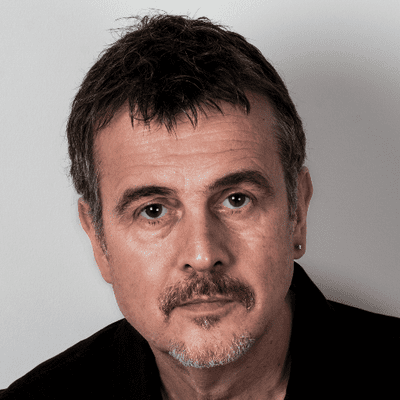
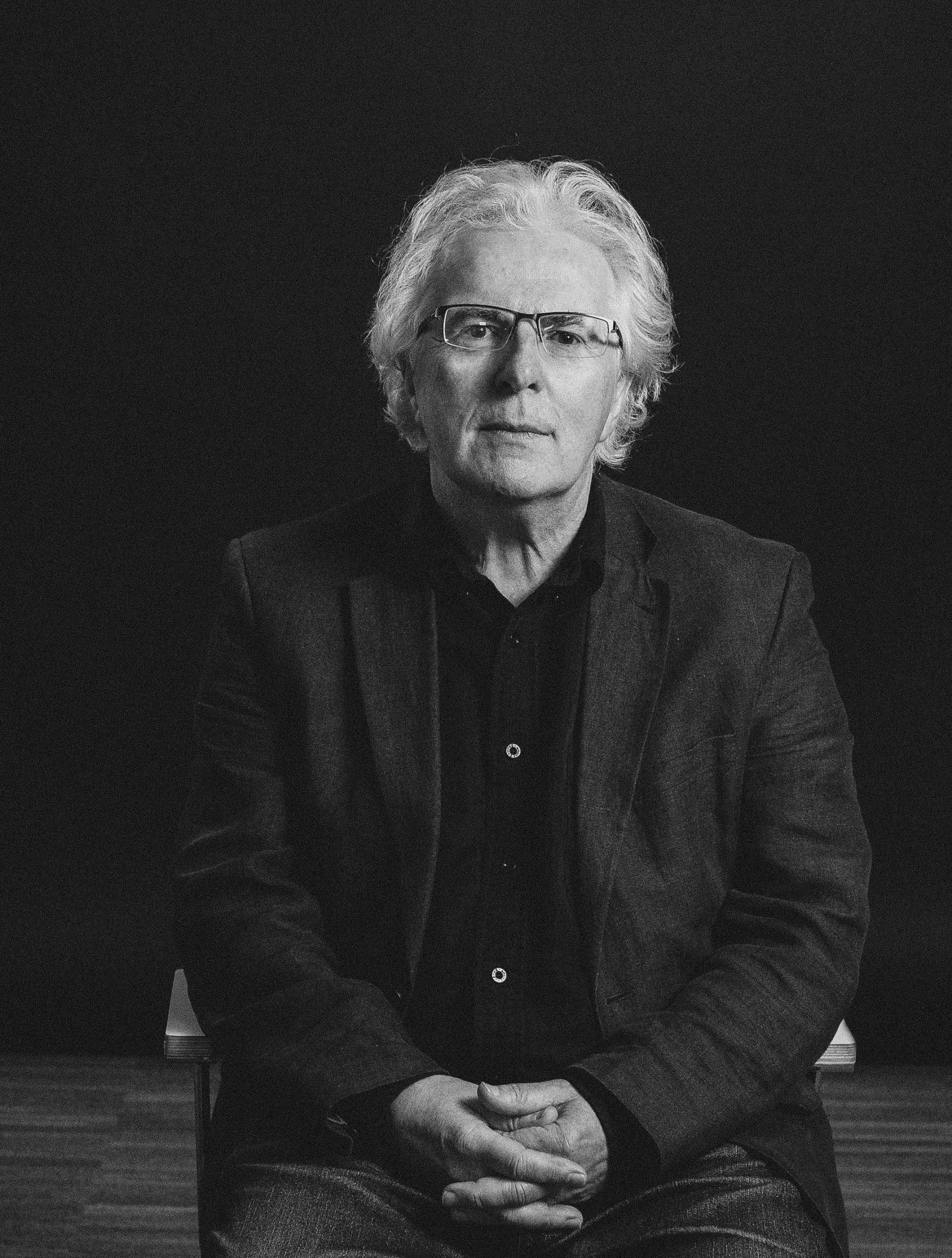
 John Connolly
John Connolly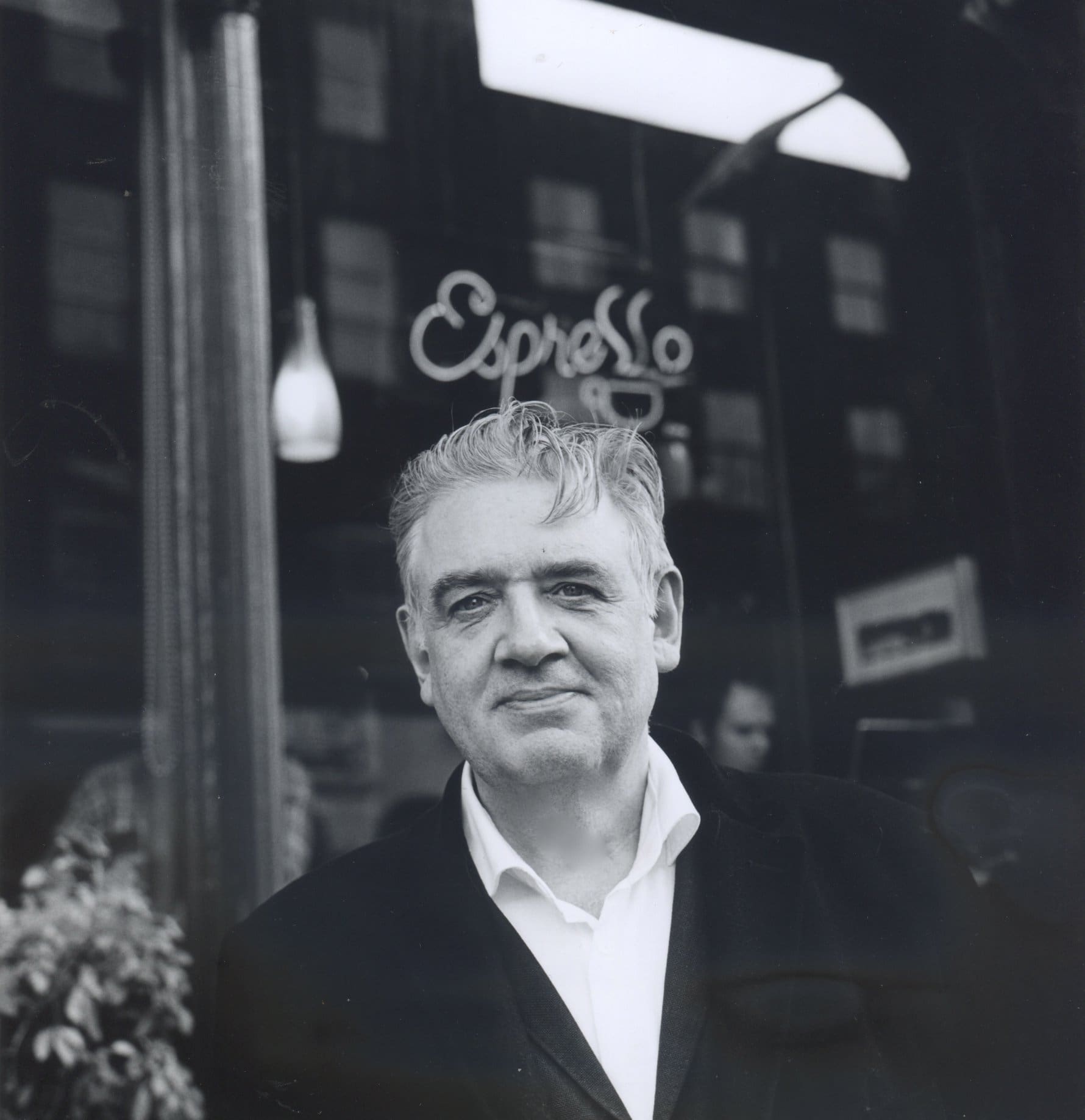 Cónal Creedon
Cónal Creedon
 Philip Davison
Philip Davison Kevin Doyle
Kevin Doyle Michelle Dunne
Michelle Dunne Catherine Kirwan
Catherine Kirwan Andrea Mara
Andrea Mara Liz Nugent
Liz Nugent
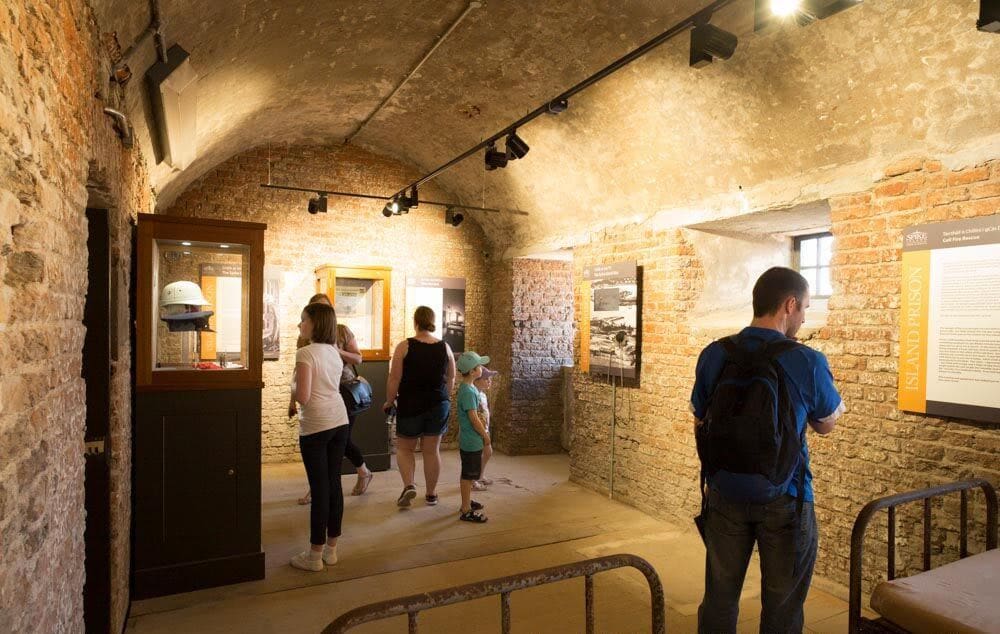 It consisted of twenty-eight solitary confinement cells and housed the ‘Penal Class’, considered the most dangerous prisoners. They were heavily chained and clothed in black from head to toe, with a veil hiding all but their eyes.
It consisted of twenty-eight solitary confinement cells and housed the ‘Penal Class’, considered the most dangerous prisoners. They were heavily chained and clothed in black from head to toe, with a veil hiding all but their eyes.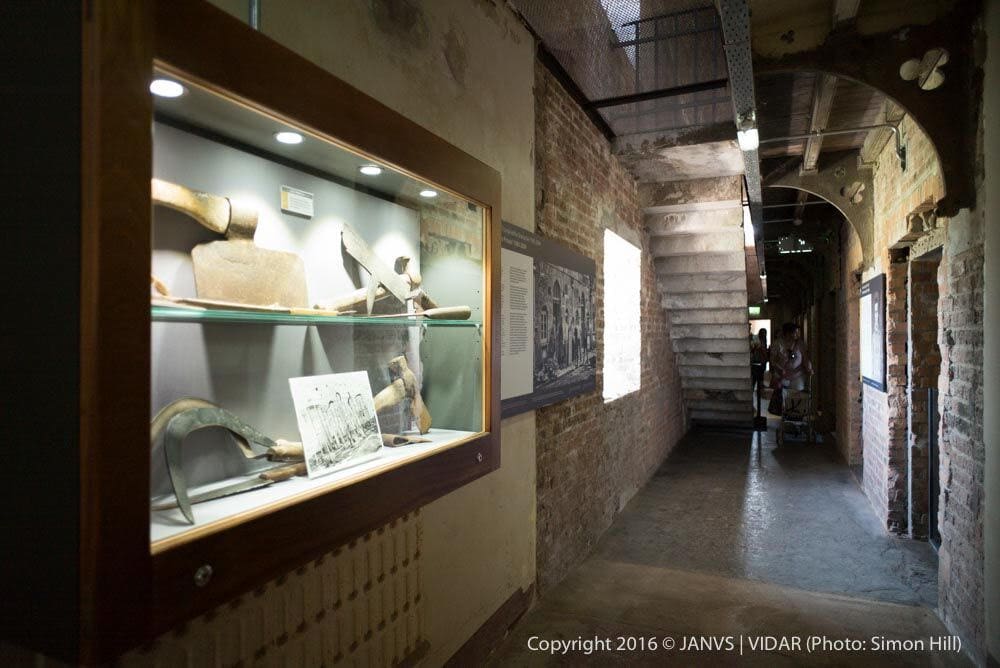 Conditions inside the block were the harshest inside the prison. At first, the cells were furnished with only a stool and convicts slept on the floor. Prisoner descriptions of medieval conditions in a Victorian prison outraged many. There were several suicide attempts and the block was the main reason that Spike Island was described as “Hell on earth” by the penal classes. A sentence to Spike Island was the worst time any offender could do, and this was largely attributable to the Punishment block.
Conditions inside the block were the harshest inside the prison. At first, the cells were furnished with only a stool and convicts slept on the floor. Prisoner descriptions of medieval conditions in a Victorian prison outraged many. There were several suicide attempts and the block was the main reason that Spike Island was described as “Hell on earth” by the penal classes. A sentence to Spike Island was the worst time any offender could do, and this was largely attributable to the Punishment block.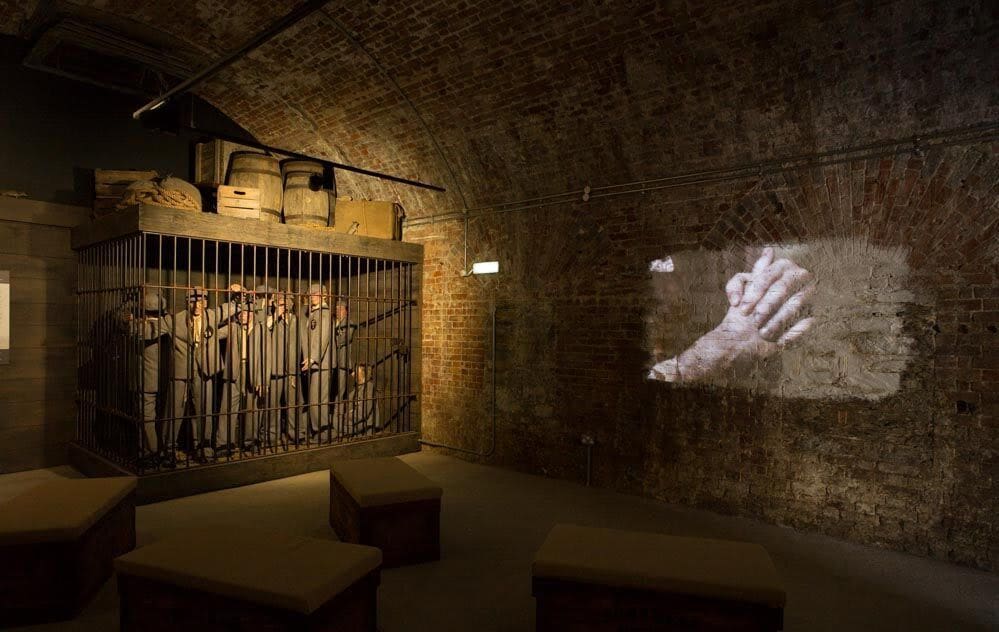 Before Victorian times there was no distinction between age groups when it came to crime and punishment, but during the 1850s when Spike Island’s prison population had swollen to the largest in the world, people began to discuss the need for prisoner reform rather than punishment.
Before Victorian times there was no distinction between age groups when it came to crime and punishment, but during the 1850s when Spike Island’s prison population had swollen to the largest in the world, people began to discuss the need for prisoner reform rather than punishment.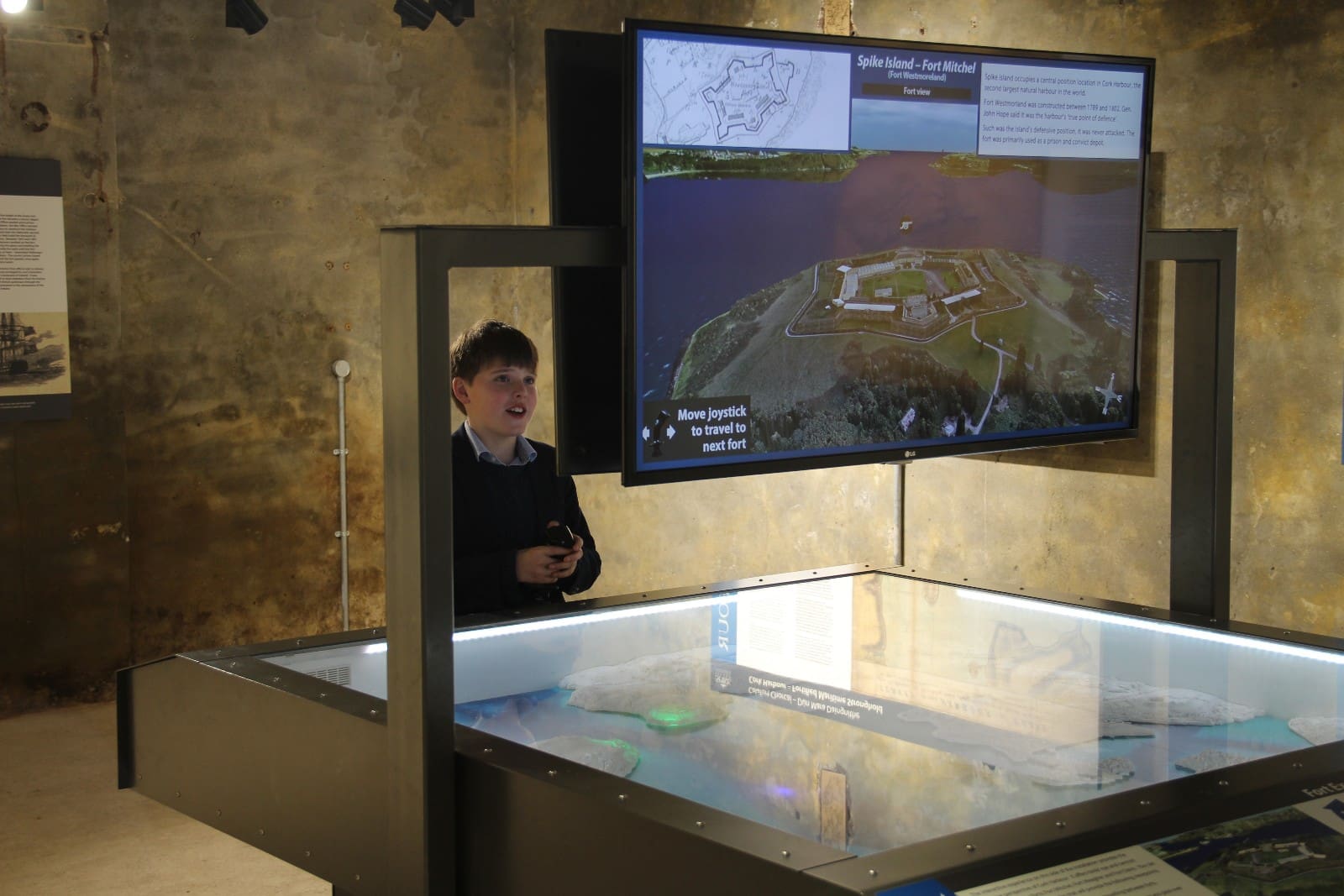 The building used to house the boys became the shell store for the fort, used to protect the ammunition from enemy shells. Today the building houses a re-creation of the cells identical to those on a convict vessel. These convict ships were moored in Cork harbour and transported prisoners from Ireland to overseas. There are also video installations telling the stories of three generations of Spike Island prisoners seperated by 3 centuries. Next to this is our John Mitchel room which tells the story of the nationalist after whom the fort is named.
The building used to house the boys became the shell store for the fort, used to protect the ammunition from enemy shells. Today the building houses a re-creation of the cells identical to those on a convict vessel. These convict ships were moored in Cork harbour and transported prisoners from Ireland to overseas. There are also video installations telling the stories of three generations of Spike Island prisoners seperated by 3 centuries. Next to this is our John Mitchel room which tells the story of the nationalist after whom the fort is named.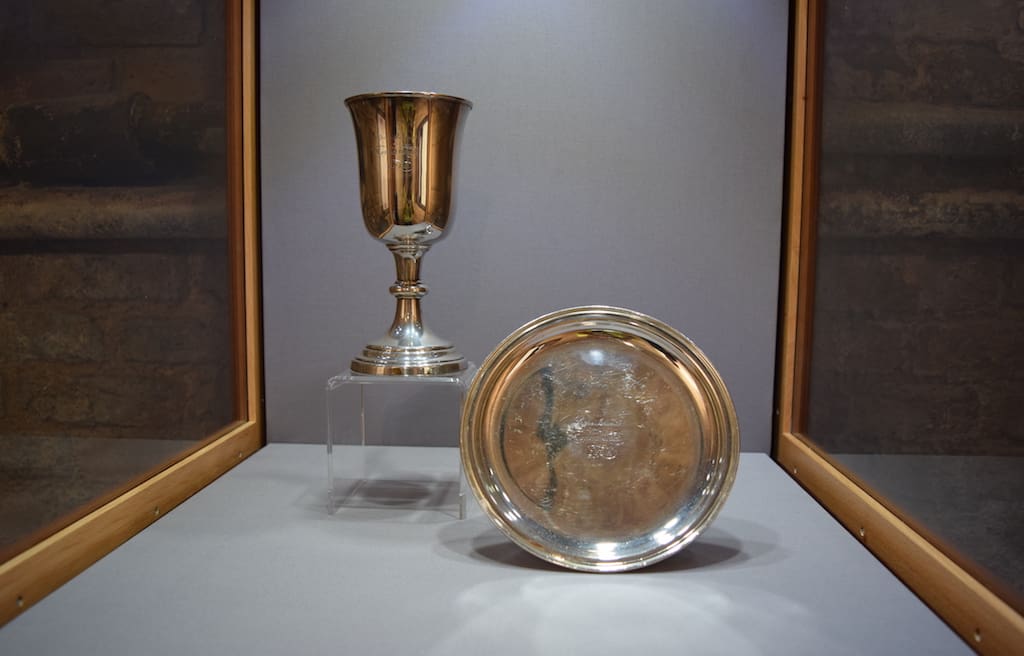 A silver-plated chalice and paten were used in the convict chapel on Spike Island between 1848 and 1883. It was used at the weekly mass on the island and it served the most notorious murders and brigands as well as the forts military men and prison officers. Religion gave spiritual relief to the unfortunate convicts and was seen as a very important part of their rehabilitation journey.
A silver-plated chalice and paten were used in the convict chapel on Spike Island between 1848 and 1883. It was used at the weekly mass on the island and it served the most notorious murders and brigands as well as the forts military men and prison officers. Religion gave spiritual relief to the unfortunate convicts and was seen as a very important part of their rehabilitation journey.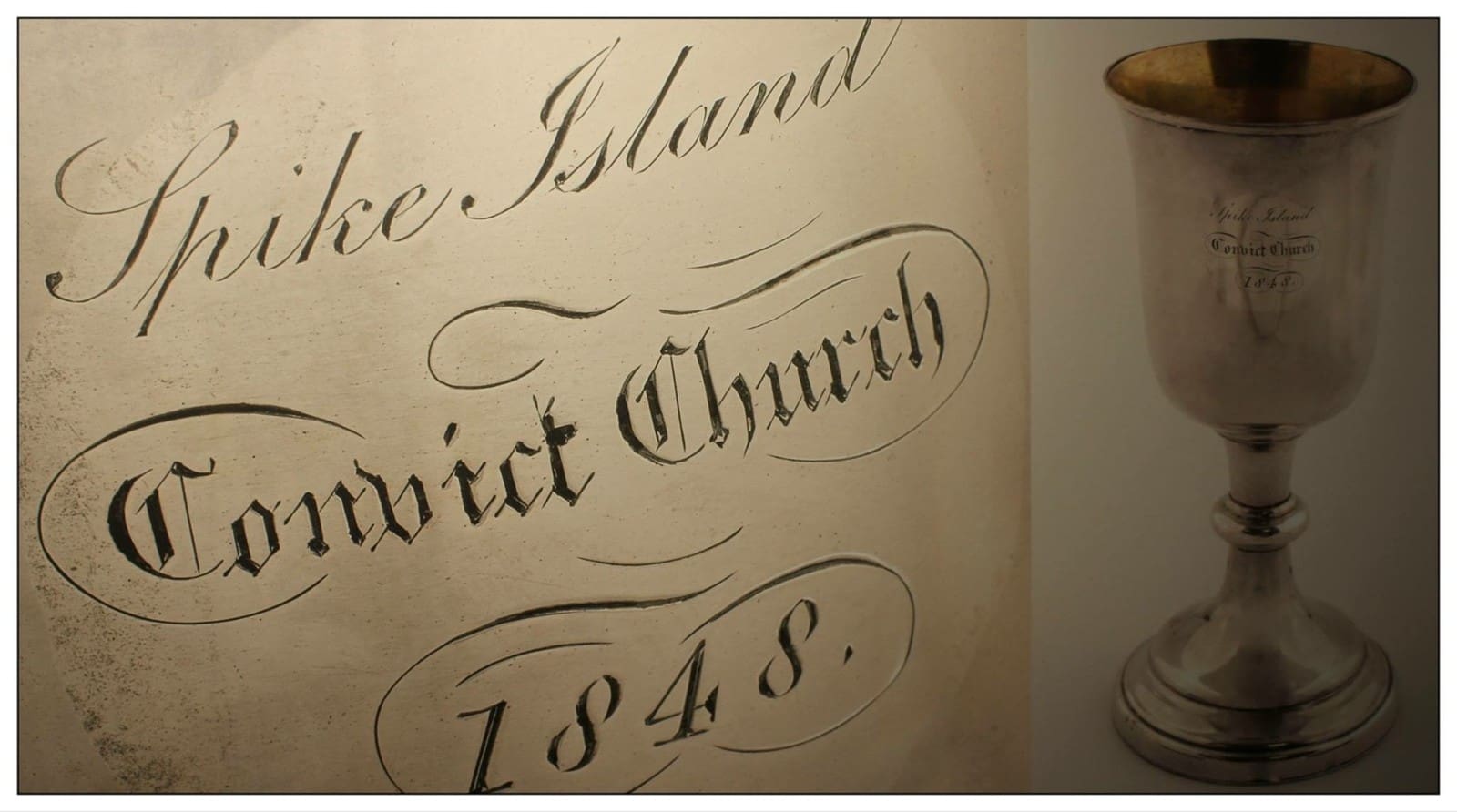 The beautiful chalice is emblazoned with the Spike Island name and uniquely has the words ‘Convict Church 1848’ engraved on it, a rare distinction. Both items were generously donated to the Spike Island museum by the Irish Prison Service in 2017 and are now on display in the Punishment Block on Spike Island.
The beautiful chalice is emblazoned with the Spike Island name and uniquely has the words ‘Convict Church 1848’ engraved on it, a rare distinction. Both items were generously donated to the Spike Island museum by the Irish Prison Service in 2017 and are now on display in the Punishment Block on Spike Island.

 About Seán Hanrahan
About Seán Hanrahan About Spike Island
About Spike Island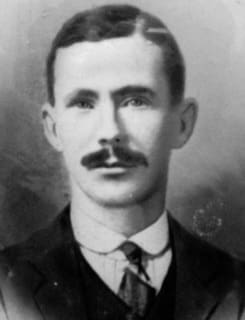 Captain Patrick White was a former carpenter who became active in the Irish War of Independence. Following arrest, he was sent to Spike Island on the 12th of April 1921, from Cork Male Gaol. White was in his mid-thirties and a captain in the Meelick Company of the East Clare Brigade of the IRA, having been involved with the Irish Volunteers since 1914. He was among a group attempting to meet the gun-running ship the Aud in 1916, only to hear of its capture and later sinking close to Spike Island. It was after participating in an attack on Crown Forces at Cartloe, Clare, in which two RIC officers were killed, that White was apprehended, along with his friend Thomas Ringrose. Both men suffered the trauma of being used as human shields on British convoys, to prevent their fellow IRA members from attacking the vehicles for fear of injuring them. It was a relief to both rebels to be taken off the mainland to Spike, White reportedly saying to his friend Ringrose ‘We are safe now’.
Captain Patrick White was a former carpenter who became active in the Irish War of Independence. Following arrest, he was sent to Spike Island on the 12th of April 1921, from Cork Male Gaol. White was in his mid-thirties and a captain in the Meelick Company of the East Clare Brigade of the IRA, having been involved with the Irish Volunteers since 1914. He was among a group attempting to meet the gun-running ship the Aud in 1916, only to hear of its capture and later sinking close to Spike Island. It was after participating in an attack on Crown Forces at Cartloe, Clare, in which two RIC officers were killed, that White was apprehended, along with his friend Thomas Ringrose. Both men suffered the trauma of being used as human shields on British convoys, to prevent their fellow IRA members from attacking the vehicles for fear of injuring them. It was a relief to both rebels to be taken off the mainland to Spike, White reportedly saying to his friend Ringrose ‘We are safe now’.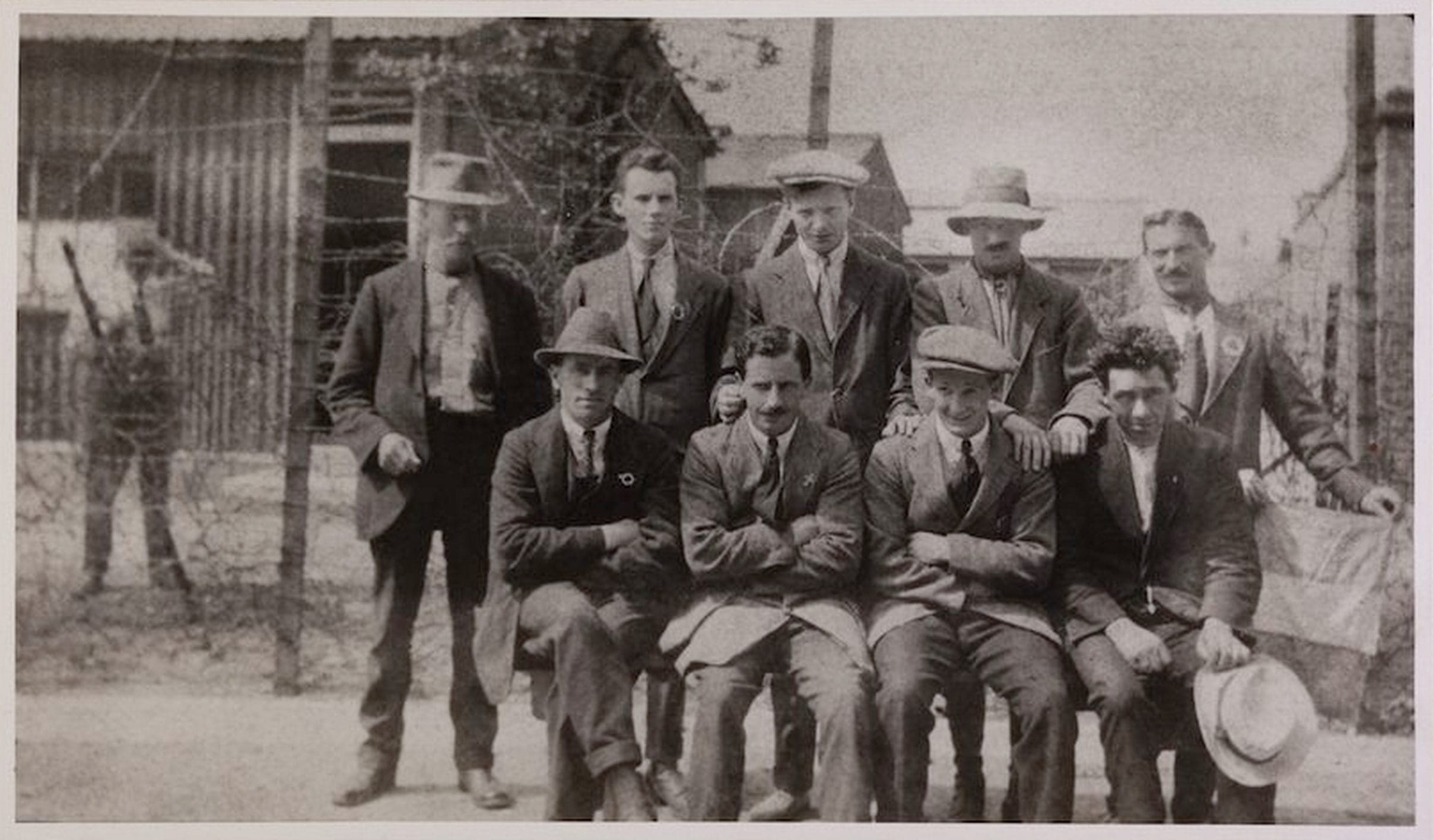
 White’s body was taken to the A block, where his countrymen held a vigil guard of honour overnight, not leaving him alone for a second. Hut one, A block, Spike Island, was a place of pain and suffering that night, as the soldiers of Ireland stood over their fallen friend, distraught and mute in disbelief. The following morning at 8.30am the cold body of Patrick White was lifted to the prison chapel, where a mass was held in solemn silence. When it ended his friends lifted the body back to hut one where it remained for two more days, while arrangements were made. On June 03rd, three days after the shooting, the body of Patrick White, now in a simple timber coffin, was brought once again to the prison chapel for a requiem Mass, before being carried by his fellow prisoners from the chapel towards the pier. Every single one of the prisoners and internees well enough to be present were there, lining the parade ground in tribute as the coffin passed. A select few of his fellow internees were permitted to carry his coffin beneath the forts entrance, out beyond the walls of the prison that confined him to catch sight of the mainland he was deprived of. An Ireland he had fought to free. On arrival to the pier they loaded his coffin on to a waiting ship, and turned to march back to captivity, looking over their shoulders as Patrick White, friend and fellow Republican, was taken on his last journey. His body was transported to Cobh where it was sent by train to his hometown of Meelick, County Clare, to be buried by his family. They might have feared, but could never have foreseen, that the next time they saw their relation following his arrest, would be at his burial.
White’s body was taken to the A block, where his countrymen held a vigil guard of honour overnight, not leaving him alone for a second. Hut one, A block, Spike Island, was a place of pain and suffering that night, as the soldiers of Ireland stood over their fallen friend, distraught and mute in disbelief. The following morning at 8.30am the cold body of Patrick White was lifted to the prison chapel, where a mass was held in solemn silence. When it ended his friends lifted the body back to hut one where it remained for two more days, while arrangements were made. On June 03rd, three days after the shooting, the body of Patrick White, now in a simple timber coffin, was brought once again to the prison chapel for a requiem Mass, before being carried by his fellow prisoners from the chapel towards the pier. Every single one of the prisoners and internees well enough to be present were there, lining the parade ground in tribute as the coffin passed. A select few of his fellow internees were permitted to carry his coffin beneath the forts entrance, out beyond the walls of the prison that confined him to catch sight of the mainland he was deprived of. An Ireland he had fought to free. On arrival to the pier they loaded his coffin on to a waiting ship, and turned to march back to captivity, looking over their shoulders as Patrick White, friend and fellow Republican, was taken on his last journey. His body was transported to Cobh where it was sent by train to his hometown of Meelick, County Clare, to be buried by his family. They might have feared, but could never have foreseen, that the next time they saw their relation following his arrest, would be at his burial.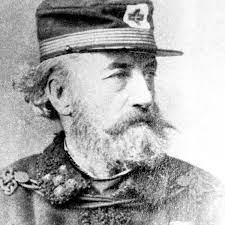
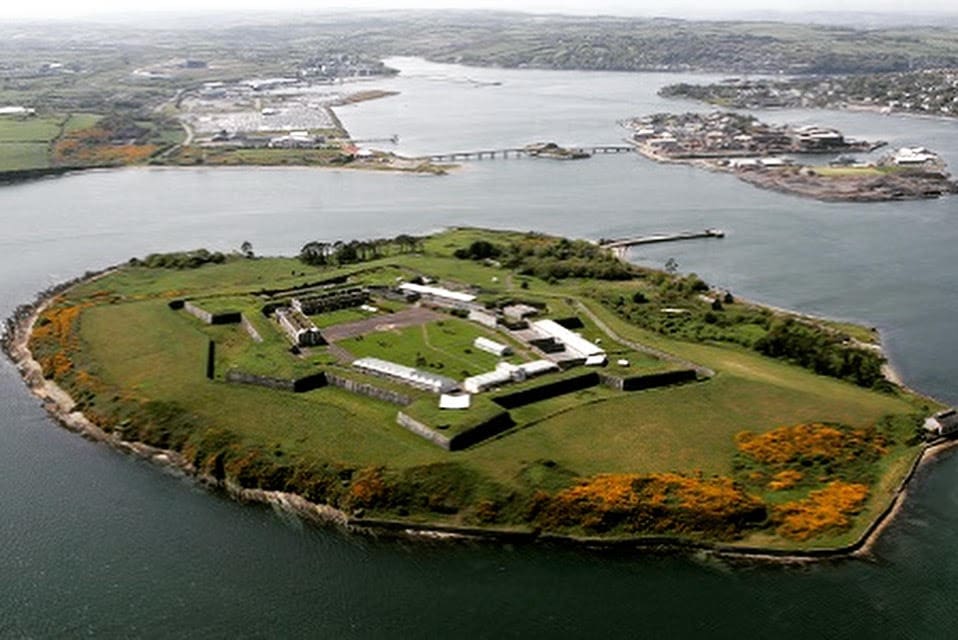

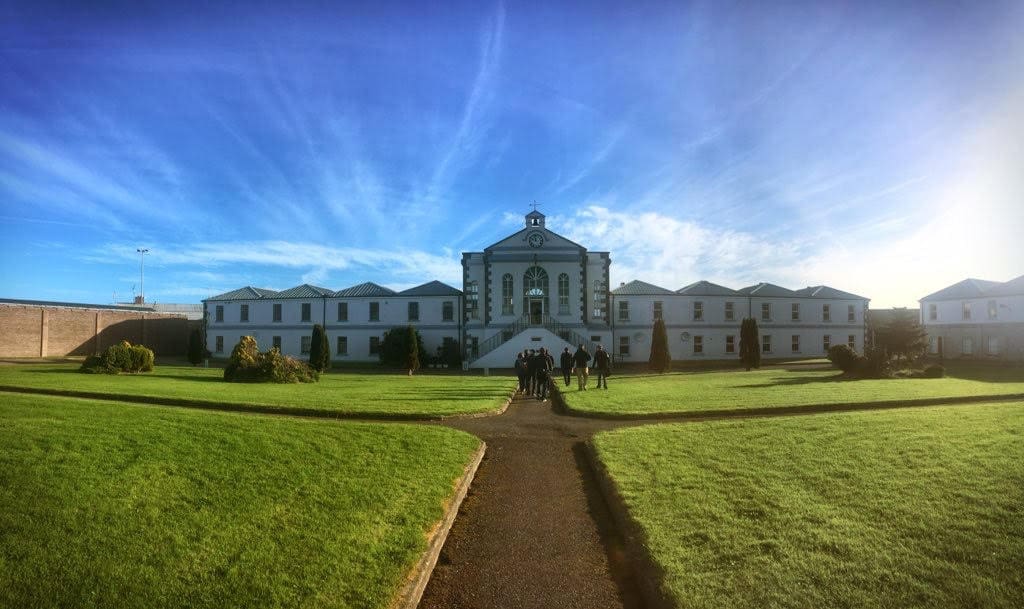 Mitchel Hall was completed in 1851 by the convict and civilian labour and the wider ‘C Block’ as it was known housed convicts sent from Mountjoy Prison in Dublin. The central hall was used as an Anglican chapel until the prisoners left in the late 1800s. This attractive building with its ornate facade saw its central hall used for dances by the island residents on Friday evenings, be they the families of soldiers or prison officers. Former residents tell stories of great excitement leading up to the dances during the Irish army period, from 1938 to 1985, when dresses would be ordered from Selfridges in London for the big event. The British servicemen held coronation balls to celebrate the arrival of new monarchs. It has seen marriages and many other events celebrated down the years.
Mitchel Hall was completed in 1851 by the convict and civilian labour and the wider ‘C Block’ as it was known housed convicts sent from Mountjoy Prison in Dublin. The central hall was used as an Anglican chapel until the prisoners left in the late 1800s. This attractive building with its ornate facade saw its central hall used for dances by the island residents on Friday evenings, be they the families of soldiers or prison officers. Former residents tell stories of great excitement leading up to the dances during the Irish army period, from 1938 to 1985, when dresses would be ordered from Selfridges in London for the big event. The British servicemen held coronation balls to celebrate the arrival of new monarchs. It has seen marriages and many other events celebrated down the years.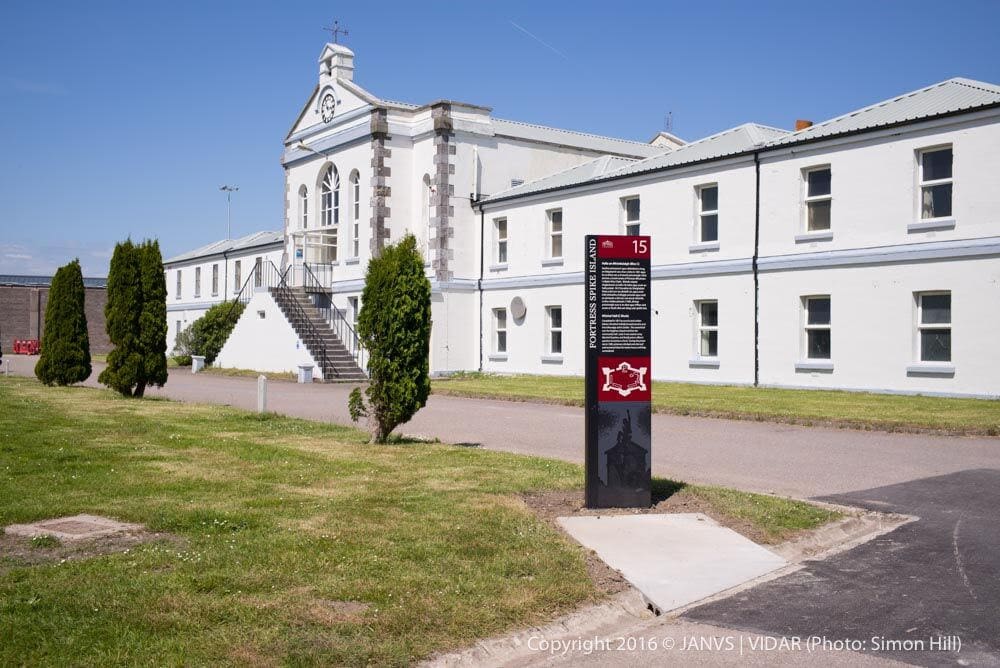 Today the block houses temporary art exhibitions and holds concerts in its former Anglican church, while the adjoining rooms hold an auditorium and a Spike Island social history exhibition. The ground floor ‘Independence’ exhibition on the north side of the building tells the story of the path to Irish freedom from 1914 to 1921. There are also rooms dedicated to the Irish Army, Naval Service and Air Corps as well as our Little Nellie exhibition.
Today the block houses temporary art exhibitions and holds concerts in its former Anglican church, while the adjoining rooms hold an auditorium and a Spike Island social history exhibition. The ground floor ‘Independence’ exhibition on the north side of the building tells the story of the path to Irish freedom from 1914 to 1921. There are also rooms dedicated to the Irish Army, Naval Service and Air Corps as well as our Little Nellie exhibition.